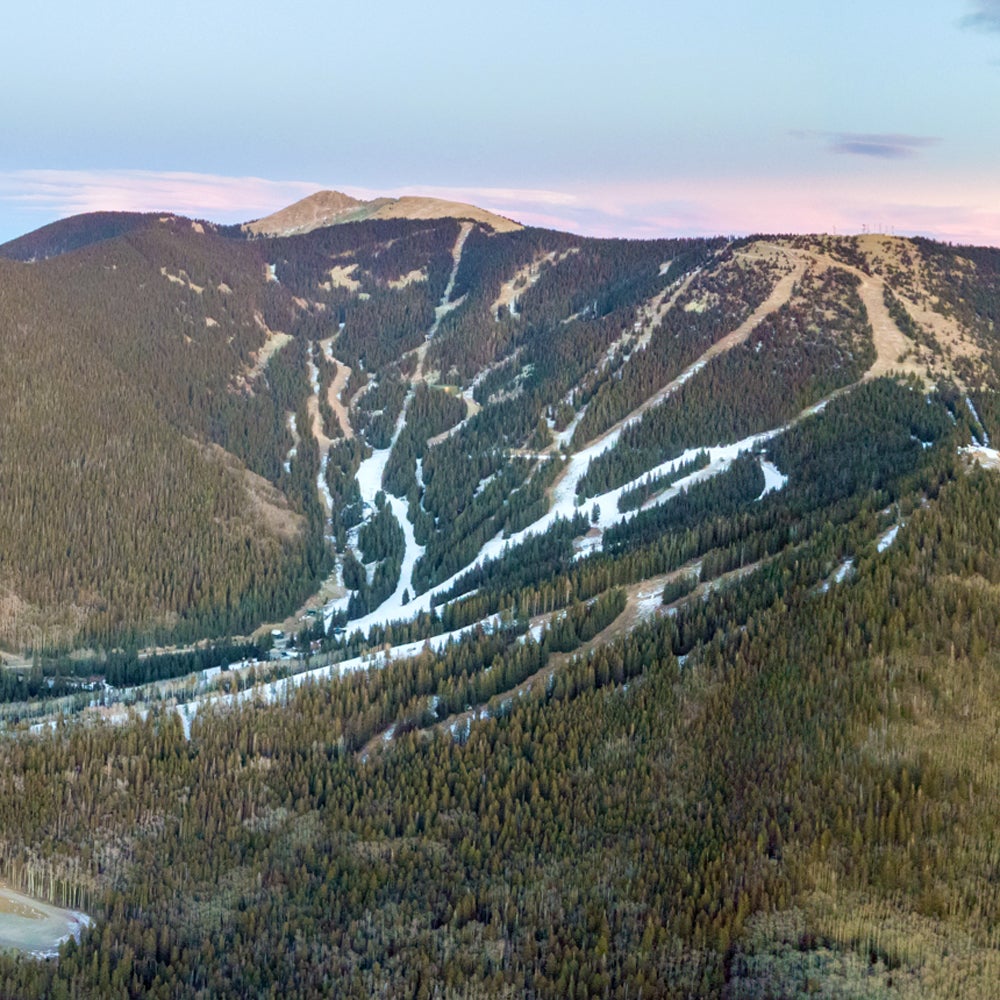As the East gets pummeled by winter storm (cough!) Grayson, a so-called bomb cyclone, and the President issues dumb tweets about global warming, it’s worth noting that ski areas in the central and southern Rockies are having the driest year in recent memory.
“The official numbers show ten to 20 percent of average snowpack,” says Joel Gratz, founding meteorologist at Boulder, Colorado-based OpenSnow, which offers forecasts for skiers. “There’s no way to sugar coat it. There’s just not a lot of snow on the ground.”
Just how dry has this winter been? According to Gratz, automated Snotel measurements done by the USDA have only been in place since the nineteen-seventies. But current conditions from roughly the I-70 corridor—which runs east to west from the main Colorado ski resorts through the Front Range—and south match or exceed the lowest snowpack Snotel levels ever recorded. “It could be the low end since the fifties or sixties,” Gratz speculates.
Brian Lazar, the deputy director of the Colorado Avalanche Information Center, based in Carbondale, notes that the snowpack in southwestern Colorado is especially grim. “Statewide snowpack in Colorado is just over 50 percent of where we should be at this time of year,” says Lazar. “December was one of the driest snowfall months on record. But the southern mountains are doing even worse than that. It gets progressively worse as you move south.”
There are some bright spots, though. Arapahoe Basin and Breckenridge, closer to the Continental Divide along I-70, have nearly 90 percent of their usual snowpack. Farther north, from northern Washington across northern Idaho and into western Montana, snowfall is above average. And British Columbia is its usual snowy self.
Even in the southern Rockies, it’s been dry but not so warm that ski areas can’t make snow. That’s where ski resorts like Vail, Aspen, Taos, Telluride, Purgatory, and Ski Santa Fe are seeing bets pay off on investments in new snowmaking.
The drought has caused many mountains to take extraordinary measures. Some have kept lift tickets at early season discount prices to keep people coming. Snow conditions in Aspen were so dire that the resort opened a soup kitchen to feed employees who weren’t getting enough work to pay their bills. Meanwhile, the Mountain Collective Pass, good for independent resorts from Revelstoke, B.C., down to some of the hardest hit areas in the south, like Taos, is now back on sale at it’s preseason price of $519.
Lazar and Gratz are both hopeful that the ridge of high pressure parked over the central Rockies could break down soon. “The dry spell that we’re in right now should break,” says Lazar. “We should pick up four-to-eight inches over the weekend.” Gratz sees a stormier pattern setting up by the end of January. But if you want snorkel-worthy powder now, you’ll need to head to the Pacific Northwest, the Alps, or maybe even the mid-Atlantic.
“My dad was going to come out in early January,” says Gratz, “But the skiing was so good in central Pennsylvania that he decided to stay. You don’t hear that too often.”

